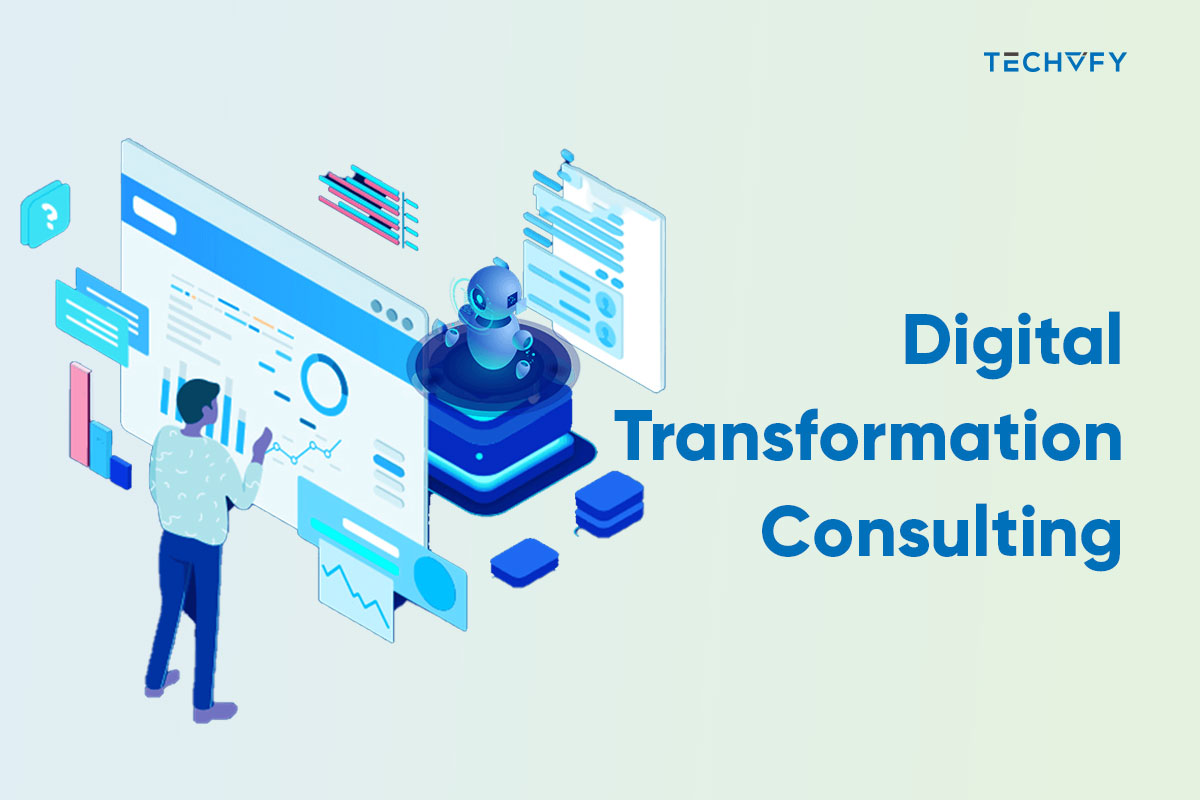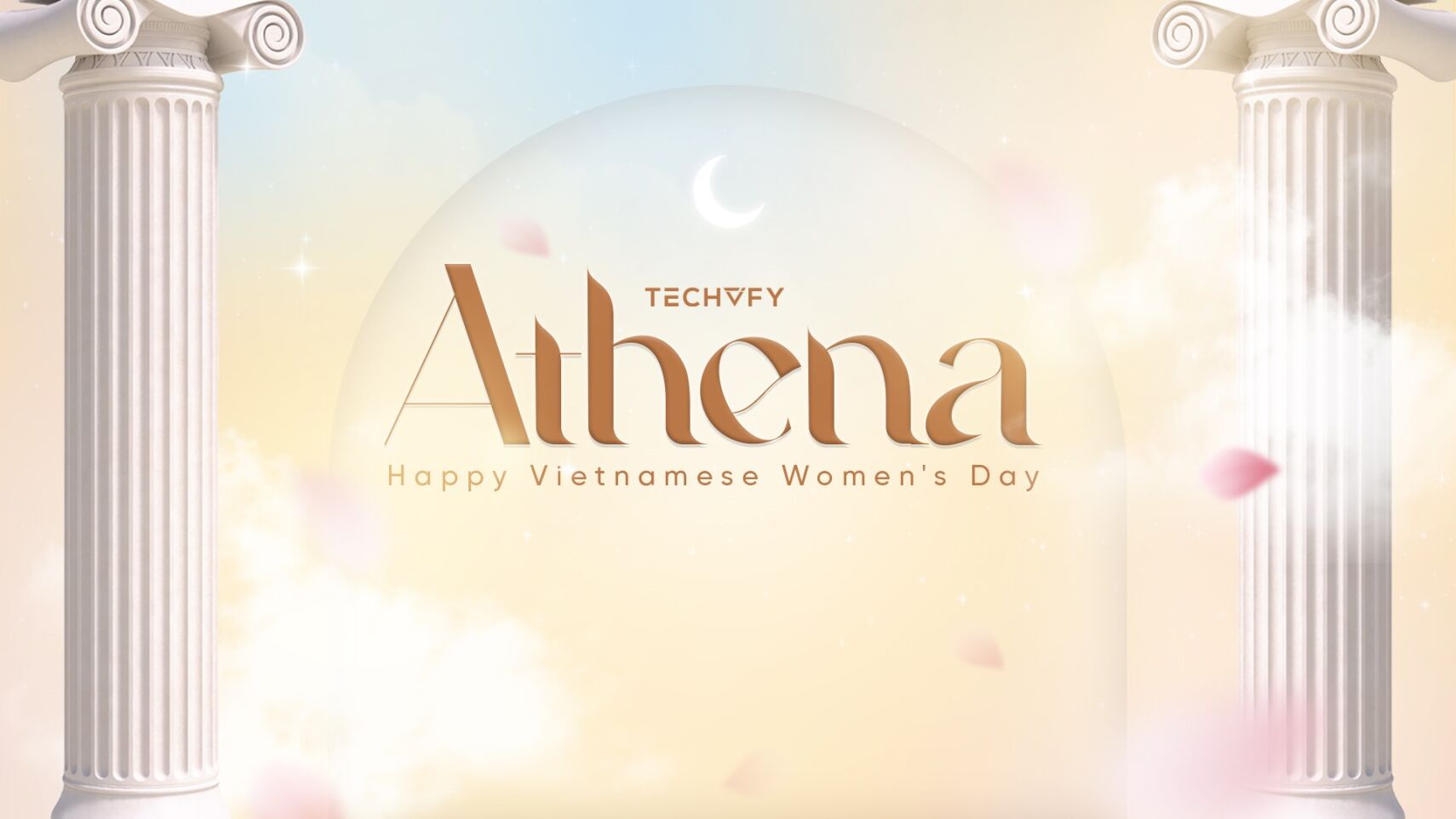You’ll go through multiple software creation steps before releasing the final version. One critical choice is the development method, and another is how you confirm your business idea’s viability.
Validating your product ensures its success by testing beliefs, identifying market needs, and providing a clear path for its growth. IT companies often use a prototype and a minimum viable product (MVP) to check if their idea will resonate with their intended audience and critical players. This article will find out the difference between MVP and Prototype, helping you determine Prototype vs. MVP, which is the right choice for your project.
I. Prototype vs. MVP: Definition
1. What is a Prototype?
A prototype is a mock-up showcasing a product’s primary design and features without being fully operational. It helps visualize the software’s essential design and how it will work.
Businesses make prototypes to identify user pathways and spot design errors before finalizing the product. These prototypes can take many forms, from simple sketches to interactive versions. The depth and detail of a prototype can differ, but it primarily shows what the end product will resemble.
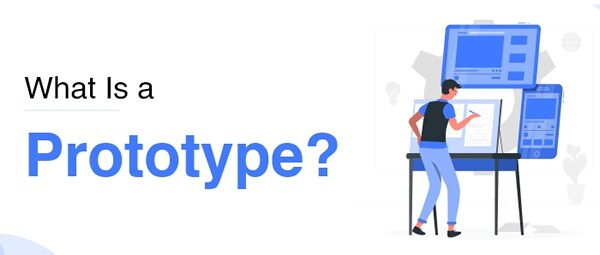
After testing the Prototype and gathering feedback, the software moves on to the next steps of the development process. It’s important to note that a prototype differs from a proof of concept. While a proof of concept focuses on the technical aspects, a prototype shows how the product will appear.
2. What is MVP?
MVP is the product version that lets a team gather the most insights about their users with minimal effort.
Here’s a simple way to see it: If someone needs to travel from one place to another and is trying to figure out the best mode, you would wait to hand them a luxury car! You could offer a skateboard or a scooter first. After hearing they prefer something with a motor, you might upgrade to a motorbike. If they desire shelter and some tunes, consider an essential car with a radio.
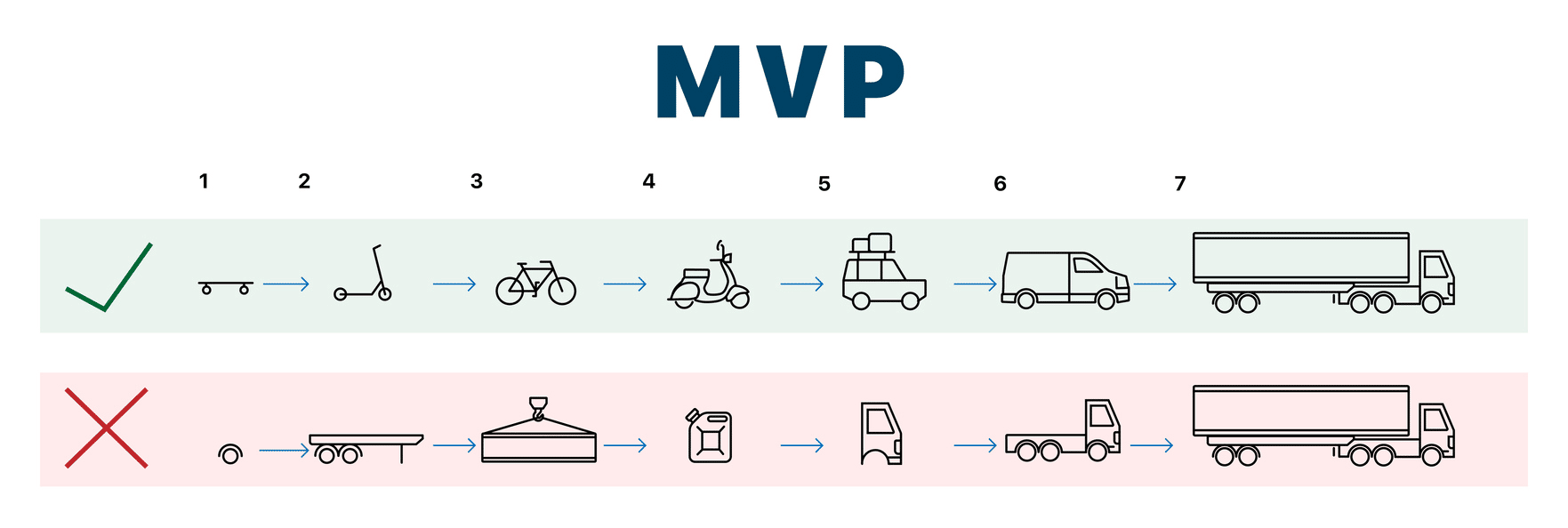
Without this step-by-step approach and feedback, you could have given them a skateboard with a game console attached, which wouldn’t make much sense.
More Software Development Insights at TECHVIFY:
II. Prototype vs. MVP, What’s the difference?
So, you must wonder, “What is the difference between MVP and Prototype?”. We’ve got you covered. Here are the most noticeable differences between MVP and Prototype.
| Criteria | Prototype | MVP (Minimum Viable Product) |
|---|---|---|
| Purpose | A prototype is understood as a preliminary model or mock-up of a product. It’s designed to visualize and test a concept or idea. The primary goal is to evaluate a product’s design, usability, and functionality in its early stages. It’s a tangible or interactive representation of an idea, allowing stakeholders to understand and interact with the design. | An MVP is the first functional version of a product that contains the essential features needed to make it viable for users. It’s developed to test the product’s viability in the market and gather real-world feedback from early adopters. The aim is to learn about the product’s strengths and weaknesses and improve based on user experience. |
| Development Time | The development time for a prototype is generally shorter since it can be partially functional. It’s more about visual representation and user experience. The duration varies from several days for basic designs to multiple weeks for intricate prototypes, based on their intricacy. | The development time for an MVP is longer than that of a prototype. It requires more detailed planning, design, coding, and testing to ensure that the product is functional and meets the basic needs of its users. Depending on the product’s complexity, it can range from a few weeks to several months. |
| Audience | The audience for a prototype is usually internal teams, stakeholders, or a select group of users. It’s meant for gathering feedback, identifying potential issues, and refining the concept before moving to more advanced stages. | The audience for an MVP is broader than that of a prototype. It targets early adopters or a specific segment of the target market. These users are willing to try out a new product, provide feedback, and help the developers understand what works and what needs improvement. |
| Functionality | Prototypes often have limited or even no actual functionality. They might simulate specific actions or processes but don’t necessarily perform them. The focus is on design, user flow, and overall experience rather than the technical workings. | An MVP offers basic functionality that addresses its users’ primary needs and problems. While it doesn’t have all the features of a fully developed product, it’s functional enough to provide value to its users and validate the product’s concept. |
| Pricing | Prototyping is generally less expensive than developing an MVP. Costs are primarily associated with design and user testing without the need for extensive coding or backend development. | Developing an MVP is generally more expensive than creating a prototype. This is due to the costs associated with more extensive development, testing, and deployment. However, the investment in an MVP can provide valuable insights into the market and potential for the product’s success. |
III. MVP vs Prototype: Which One to Choose?
There’s a notable risk of ideas not taking off in the IT field. That’s why forward-thinking companies and new ventures work hard to gauge interest and reduce the chances of an idea flopping. When deciding between an MVP (Minimum Viable Product) strategy or prototyping, you must ask some key questions. A crucial one is: ‘Have you received any comments on the design of your solution?’ If you have, think about crafting an MVP. If not, exploring a clickable prototype could be the way to go.
Prototyping is a great choice when you want to pinpoint design issues. It offers a glimpse into what your potential audience thinks of your concept.
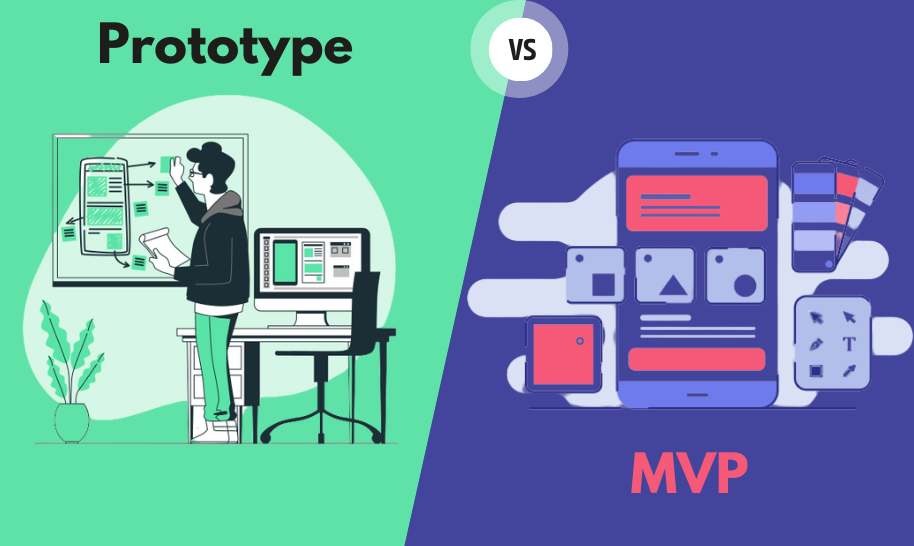
Conversely, an MVP could be the answer if you need more clarification about how well your idea aligns with market demands. Developing an MVP provides a roadmap for future product enhancements. Plus, if you’re working with a tight budget, an MVP ensures you only overspend on a full product after getting feedback from potential users.
Please feel free to contact us for a free consultation:
Conclusion
MVPs and prototypes are efficient tools to test your business idea without spending too much time or money. They can boost your software launch and improve your chances of success by allowing you to evaluate essential concepts, technical abilities, and market demand. While both are vital in the software creation journey, they serve different purposes. Instead of choosing between Prototype vs. MVP, using both methods sequentially is often wise before developing a complete product.
If you’re looking for expert guidance or technical know-how to enhance the initial phases of your project, feel free to contact TECHVIFY and talk with our expert about your project.
TECHVIFY – Global AI & Software Solution Company
From Startups to Industry Leaders: TECHVIFY prioritizes results, not just deliverables. Accelerate your time to market and see ROI early with high-performing teams, AI (including GenAI) Software Solutions, and ODC (Offshore Development Center) services.
- Email: [email protected]
- Phone: (+84)24.77762.666




